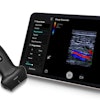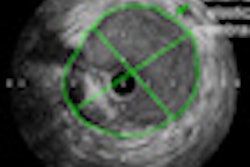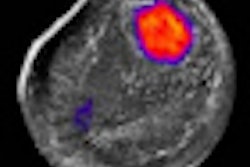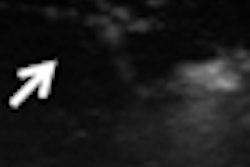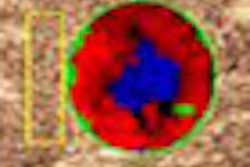Monday, November 29 | 3:00 p.m.-3:10 p.m. | SSE01-01 | Room E450A
Using targeted ultrasound on breast lesions -- particularly masses -- identified as BI-RADS category 3 by MRI can help identify malignancies, according to researchers from Brown University in Providence, RI.On Monday afternoon, Ana Lourenco, MD, and colleagues will present findings of the study they conducted to determine whether targeted, or second look, ultrasound changes treatment protocol in patients who have had BI-RADS 3 lesions identified by breast MRI.
The team reviewed 3,211 consecutive contrast-enhanced breast MR exams that had been acquired at Brown's Alpert Medical School between March 2004 and March 2009. They focused specifically on BI-RAD 3 exams and those for which a targeted ultrasound scan was recommended. The researchers found that 255 (8%) of the total MR exams performed were in category BI-RADS 3.
Twenty-six percent, or 62, of the women had 64 BI-RADS 3 lesions. They all had a targeted ultrasound exam for evaluation of 38 masses and 26 areas of nonmass enhancement. Of these 64 lesions, ultrasound found 30 (47%), which included 20 (53%) of the 38 masses and 10 (38%) of the 26 nonmass lesions.
Of these 30 lesions detected by ultrasound, 19 (63%) were upgraded to BI-RADS 4, including 13 (34%) of the 38 masses and six (23%) of the 26 nonmass lesions. Lourenco's team found that of the 19 lesions upgraded to BI-RADS 4, two (10%) were malignant at biopsy (both were masses). Five of the 64 originally categorized BI-RADS 3 lesions were downgraded to BI-RADS 2 after the targeted ultrasound.
The study shows that targeted ultrasound can be helpful in finding malignancies before a woman's short-interval follow-up, the research team concluded.

